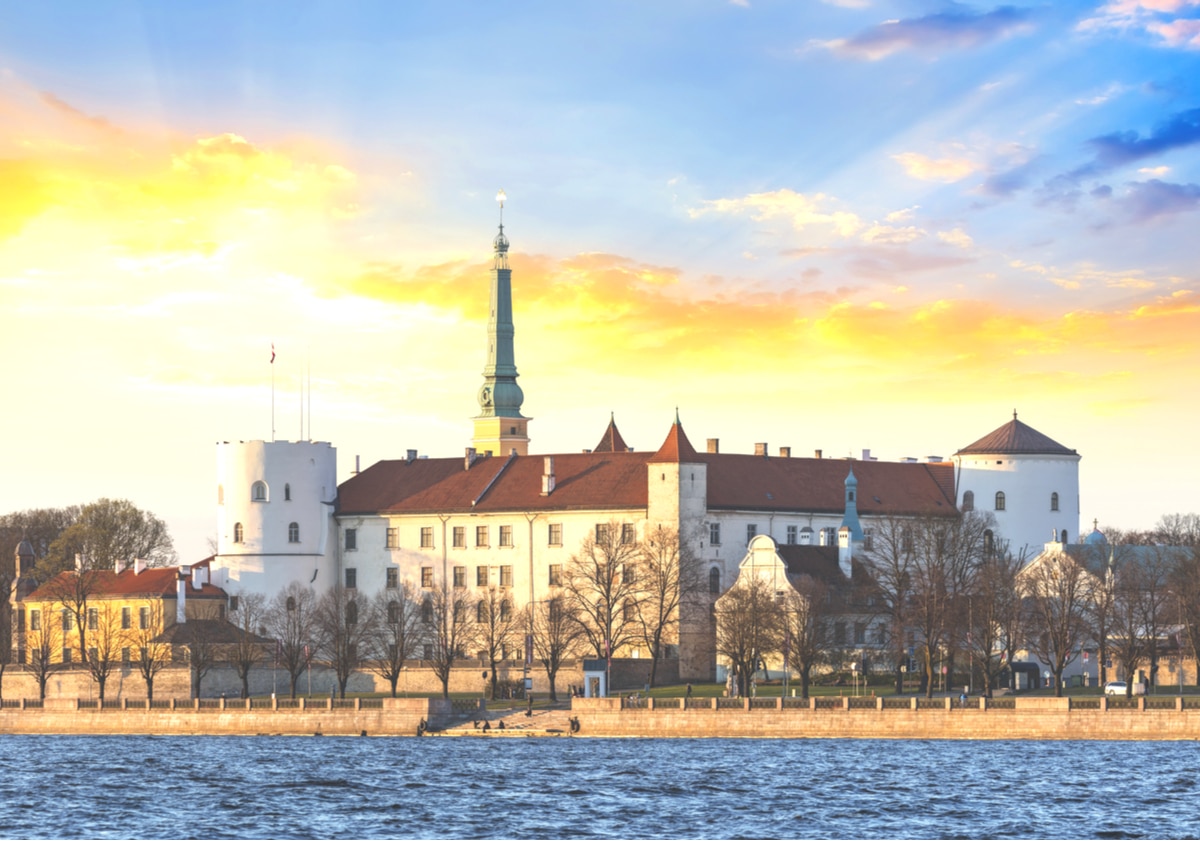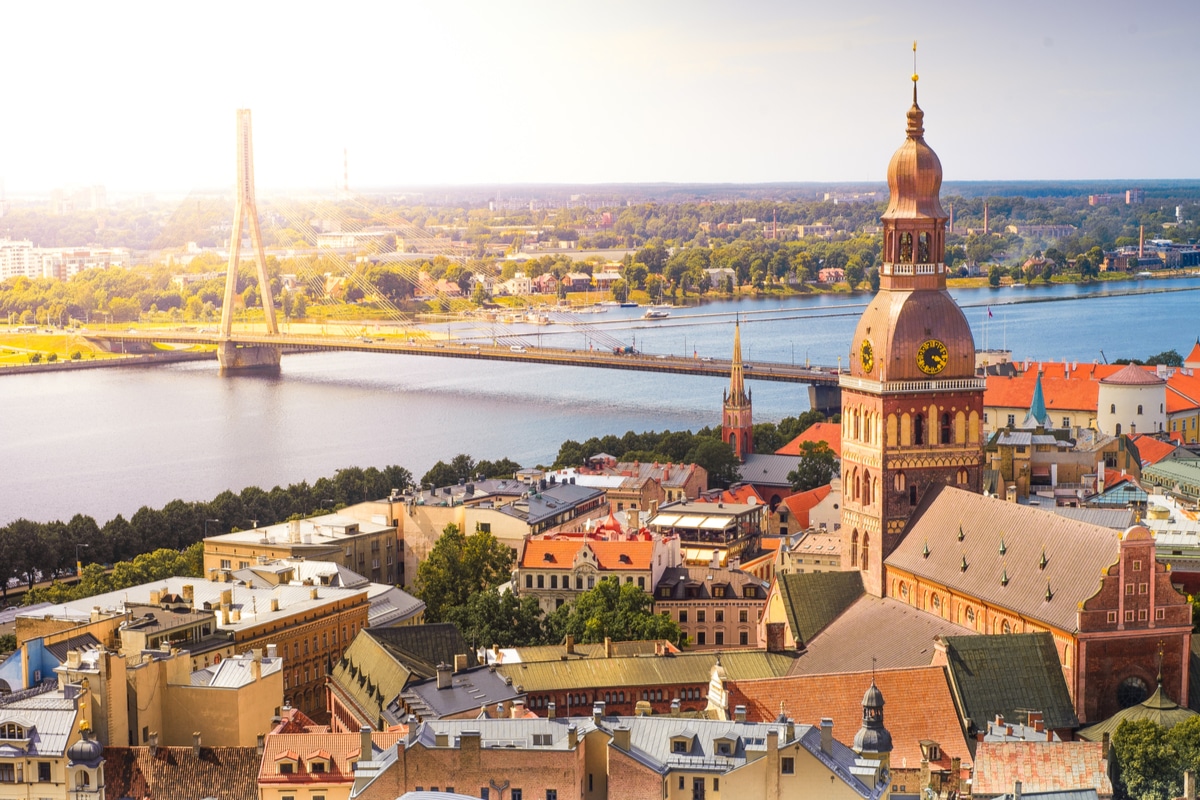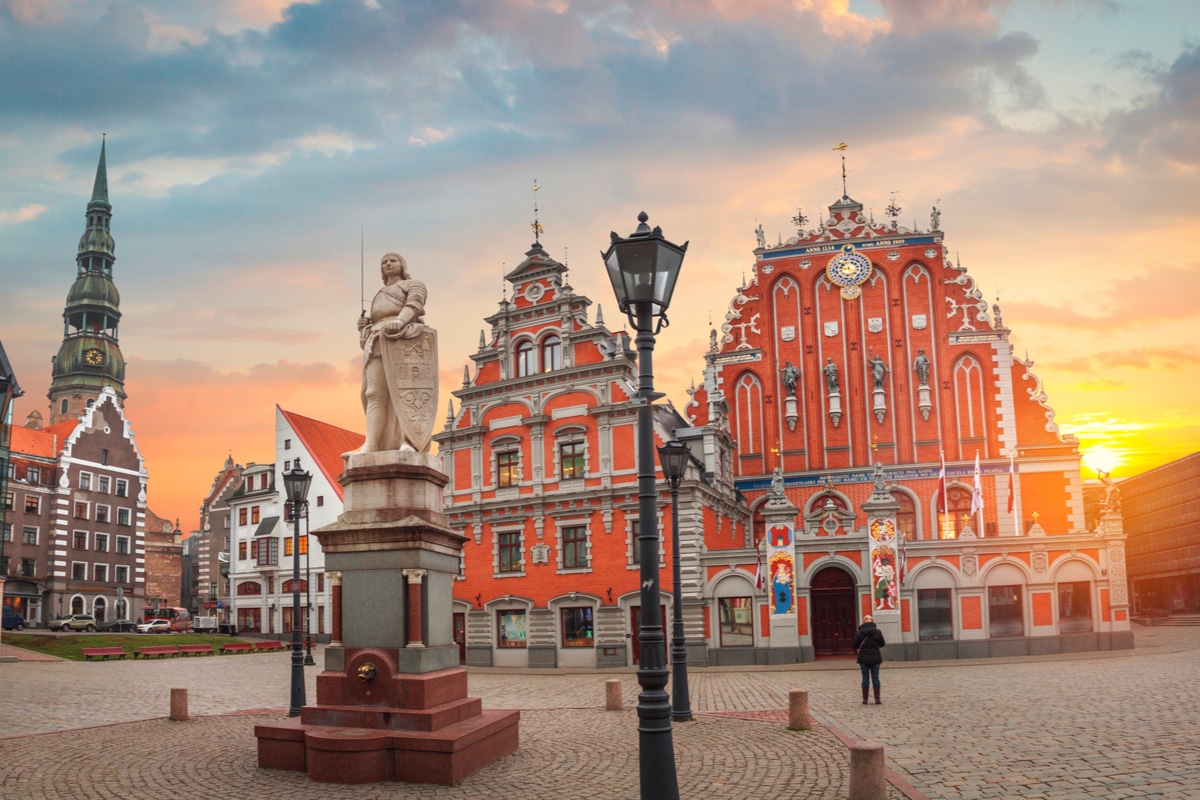Riga Castle
Situated on the river, Riga Castle looks back on an exciting history. Changing residents and numerous reconstructions have given the castle its current, classicist appearance.

Construction in only 23 years
Built in 1330 by the Livonian Order, the castle was completed in 1353 after only 23 years of construction. The building initially had a square floor plan with a tower at each corner. On the ground floor was the guardhouse and there was space for the household. On the first floor were the chambers. The second floor was equipped with embrasures and served as weapon storage and defence in case of a possible attack.
The location on the Daugava allowed a view all the way to the harbour, so that possible enemies, who would mainly use the sea route, could be detected early.
Troubled times
However, the enemies did not come by sea: in 1484 the castle was completely destroyed during clashes between the Order and the population. It was not until 1515 that the castle began to be rebuilt and round cannon towers were built, the Tower of the Holy Spirit to the west and the Lead Tower opposite.
Until 1562 the castle was the residence of the Master of the Livonian Order. After the Order lost its influence, successive Polish and Swedish rulers used the castle as a power centre during their rule over Latvia. From 1710 to 1918 it was the residence of the Russian tsarist governor general. In 1918 Latvia first regained its independence, so that the castle was used as a residence by the Latvian president in the following years.
At the beginning of the 20th century, during the last reconstruction works to date, the architect Eižens Laube had another tower built, the Three Star Tower. Today it is the highest tower of the building. In addition, a banqueting hall was built and the vestibule was remodelled.
The castle today
Since 1995, the former outer castle, built in the 16th century, has housed the premises of the Latvian President, for whom Riga Castle now serves as his official residence. When a fire broke out there in 2013, the castle again experienced hard times. 3200 square meters in the north and east wings of the castle were partially destroyed.
Today the castle houses, among others, the Museum of Latvian History and the Museum of Literature, Theatre and Dance.
In front of the walls of the castle is the green castle park, which was created during reconstruction work in the 18th century, by filling in the moat that had existed until then.



